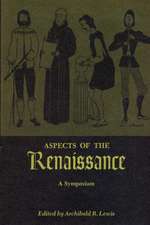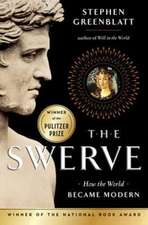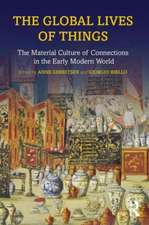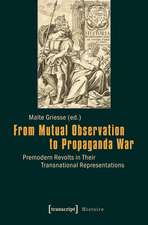Transnational Networks and Cross-Religious Exchange in the Seventeenth-Century Mediterranean and Atlantic Worlds: Sabbatai Sevi and the Lost Tribes of Israel: Universal Reform: Studies in Intellectual History, 1550-1700
Autor Brandon Marriotten Limba Engleză Paperback – 14 oct 2024
| Toate formatele și edițiile | Preț | Express |
|---|---|---|
| Paperback (1) | 257.68 lei 6-8 săpt. | |
| Taylor & Francis – 14 oct 2024 | 257.68 lei 6-8 săpt. | |
| Hardback (1) | 1001.84 lei 6-8 săpt. | |
| Taylor & Francis – 28 iun 2015 | 1001.84 lei 6-8 săpt. |
Preț: 257.68 lei
Preț vechi: 310.22 lei
-17% Nou
Puncte Express: 387
Preț estimativ în valută:
49.31€ • 51.19$ • 41.12£
49.31€ • 51.19$ • 41.12£
Carte tipărită la comandă
Livrare economică 22 martie-05 aprilie
Preluare comenzi: 021 569.72.76
Specificații
ISBN-13: 9781032928715
ISBN-10: 1032928719
Pagini: 182
Dimensiuni: 156 x 234 mm
Greutate: 0.34 kg
Ediția:1
Editura: Taylor & Francis
Colecția Routledge
Seria Universal Reform: Studies in Intellectual History, 1550-1700
Locul publicării:Oxford, United Kingdom
ISBN-10: 1032928719
Pagini: 182
Dimensiuni: 156 x 234 mm
Greutate: 0.34 kg
Ediția:1
Editura: Taylor & Francis
Colecția Routledge
Seria Universal Reform: Studies in Intellectual History, 1550-1700
Locul publicării:Oxford, United Kingdom
Public țintă
AcademicCuprins
Introduction; The lost tribes in the Americas: Judeo-Christian reciprocity across the Atlantic world (1648-1666); New monarchs or grand impostors? James Nayler and Sabbatai Sevi (1656-1666); Who sacked Mecca? The life of a rumour (1665-1666); A Jewish Messiah among Christians: the evolution of European perceptions of Sabbatai Sevi (1665-1666); Conclusion; Appendix; Select bibliography; Index.
Notă biografică
Brandon Marriott received his doctoral degree in early modern European history from the University of Oxford in 2012. His publications and presentations centre on cross-religious interactions in the early modern Abrahamic world. He has recently worked as a sessional instructor at Simon Fraser University and held a short-term fellowship at the Warburg Institute to undertake research on his next project: a cross-religious history of Gog and Magog.
Descriere
In 1644 the news that Antonio de Montezinos claimed to have discovered the Lost Tribes of Israel in the jungles of South America spread across Europe and the Ottoman Empire fuelling an already febrile atmosphere of millenarian expectation, culminating in the claims of Sabbatai Sevi to be the Jewish messiah. By situating this transmission in a histo













